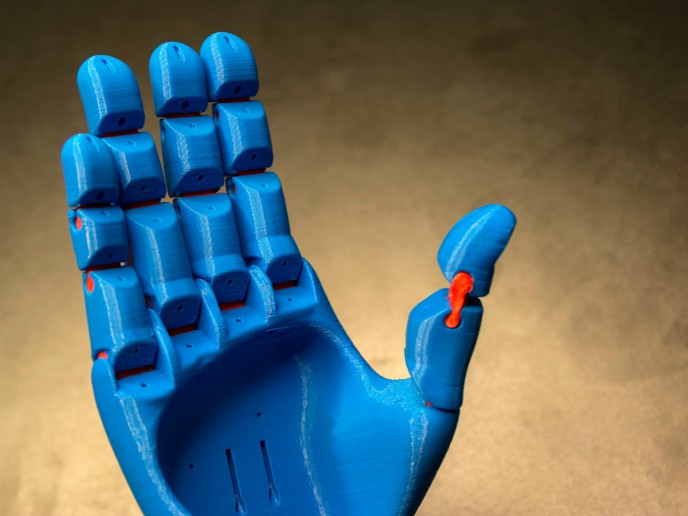Keep running with fully personalised 3D prosthetics and bionics production
Personalised bionics, smart endoprosthetics (for knees and hips), and exoprosthetics all need geometric and functional customisation. Bionics differ from prostheses by mimicking the original function or even surpassing it, usually by linking up to the person’s nervous or muscle system for operation. The Symbionica project has fulfilled its mission – it is now technically feasible to produce smart, fully customised orthopaedic prostheses. “Symbionica has developed a novel certified machine for multi-material additive manufacturing,” states Alessio Giuliani, project coordinator and research director of Sintea Plustek SRL, the coordinating company manufacturing orthopaedic products. Satisfying the needs of the medtech sector and the patients The list of Symbionica achievements is impressive. There are four demo certifiable prostheses belonging to different families along with four parametric CAD templates to generate these prostheses. Products are manufactured in one processing step. The advantage of such manufacturing technologies is that the product can have complex shape even in a 3D structure and is joint free. “The machine handles both additive deposition and ablation so is flexible and reconfigurable,” explains Giuliani. Important for ultimate design and function, the team designed a novel cooperative design platform that interfaces with computer-aided design and manufacturing (CAD/CAM) as well as medical device diagnostic systems. The CAM software uses the models created in CAD to drive machine tools and turn designs into the various prostheses. For honing personalisation, there is a system that enables the collection and analysis of patients’ clinical data. A supply chain co-engineering platform enables advanced design, full personalisation and patient support. Incorporating repairs, obsolescence management, training and technical assistance, Symbionica products fulfil all end users’ needs for the ultimate in functioning. Innovation for the ultimate in production efficiency “A number of innovation features radically reduce prosthesis manufacturing costs and contribute to cost-effective customisation while minimising energy loss and raw material waste,” Giuliani emphasises. Integration of technologies into a single machine combines the ultimate so far in production with precision – there is zero set-up time and no material waste. Powder loss is also minimised thanks to a shielded working space so all ejected powder is kept in the production area and protected from oxygen contact. A high beam laser source enables power densities on the working area currently only possible with higher-power lasers, therefore minimising energy loss. Combination of two highly efficient laser sources ensures the highest possible throughput rate. A continuous wave laser sinters the metal powders, and a pulsed laser enables precise ablation and surface smoothing. Prosthetic steps into the future There are still some open issues in the certification of 3D-printed medical devices whose mechanical properties are dependent on the manufacturing direction. “Therefore, going more in depth into this topic could be a reasonable evolution of this project,” notes Giuliani. Patient requirements are inherently very varied in the prostheses sphere, but Symbionica has provided innovation action for products, processes, equipment and value chain to cope with this demand. Giuliani sums up the key achievements for the team: “Symbionica has developed an extraordinary machine able to bring 3D-printed medical device manufacturing technology to the next level of innovation.”
Keywords
Symbionica, bionic, prostheses, orthopaedic, ablation, 3D-printed, additive manufacturing, computer-aided design and manufacturing, CAD/CAM



